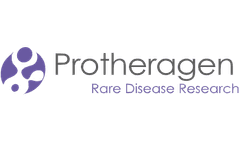Refine by
Neurology Disorder Articles & Analysis
30 articles found
The stability of tRNA molecular conformation together with genome translation efficiency depend on this modification. Many diseases including neurological disorders and tumors result from defective tRNA methylation. ...
This innovative approach has led to breakthroughs in understanding complex brain functions, neurodegenerative disorders, and psychiatric conditions. The Role of AAVs in Optogenetics Adeno-associated viruses are particularly well-suited for optogenetics due to their ability to provide stable gene expression in non-dividing cells, such as neurons. ...
They allow researchers to: (1) Investigate Endocrine Mechanisms: Advanced analysis techniques help researchers study steroid hormone imbalances associated with various conditions, including cortisol dysregulation, reproductive disorders, and adrenal dysfunction in experimental models. These precise analytical methods support foundational understanding of endocrine ...
Their highly specific interactions with biological targets offer unprecedented precision in treating autoimmune disorders, cancers, and genetic conditions. However, their structural complexity presents unique manufacturing challenges, requiring specialized bioprocessing techniques, cold chain management, and sophisticated analytical methods. ...
· Organoid Disease Modeling – Our models provide a controlled and physiologically relevant setting for studying complex diseases, including cancer, neurological disorders, and gastrointestinal conditions. · Drug Screening & Toxicity Testing – Patient-derived organoids aid in high-throughput drug screening and predictive toxicity ...
The Importance of HA-c Research using HA-c has illuminated several key aspects of cerebellar function and its involvement in neurological diseases. These astrocytes maintain the integrity of the blood-brain barrier, regulate neurotransmitter levels, and provide metabolic support to neurons. ...
These findings could improve our understanding of neurological disorders such as autism and epilepsy. 3. Protein Mapping in Cell Cycle Phases A 2024 study mapped out thousands of proteins involved in cell division, providing a molecular blueprint for developing more targeted cancer therapies. ...
They are implicated in a wide range of conditions, from cardiovascular and metabolic disorders to neurological diseases and cancers. By facilitating the early stages of the drug development pipeline, GPCR Screening Services help streamline the identification of lead compounds, optimizing the chances of successful therapeutic outcomes. ...
The process of iPSC differentiation to neurons and neuronal cells is of special importance for neurobiology and related disorders, considering the dearth of clinically relevant in vitro models available for research, drug screening and development, as well as the lack of therapy to reverse neuronal damage. Benefits and advantages of iPSC differentiation to neural stem cells ...
The high selectivity, resistance-overcoming capabilities, and ability to target previously undruggable proteins make PROTACs effective in various diseases, including neurological disorders, inflammatory diseases, and cancer. Peptide-Based SM-PROTAC Traditional PROTACs are linear structures that connect target protein ligands and E3 ligands with suitable linkers. ...
(5) Neurobiology: In the field of neuroscience, CD Genomics' Ribo-seq services offer insights into translational regulation in the brain and nervous system, supporting research on neurological disorders and neurodevelopment. (6) Plant Biology: Ribo-seq services are pivotal in studying how plants adapt to various growth conditions and environmental ...
They also exhibit promising results in treating neurological disorders, diabetes, liver diseases, and in cancer therapy. ...
Chimeric RNAs have also been implicated in other diseases, such as neurological disorders. Sequencing Technologies for Chimeric RNA Detection Chimeric RNA molecules, which arise from genomic rearrangements, alternative splicing, or fusion events, have emerged as crucial players in diverse biological processes and disease pathogenesis. ...
From exploring their roles in some neurological disorders, cardiovascular diseases to electrolyte imbalance—it's a resourceful tool. ...
More than a dozen viral gene therapy products have been approved for the treatment of cancer, infectious diseases, and rare single-gene disorders. The main types of viral vectors used clinically for in vivo gene therapy include adenovirus, adeno-associated virus (AAV), herpes simplex virus (HSV), retroviruses, and lentiviruses. ...
In late November, EpiFinder Co-Founder Neel Mehta and Creative Officer Kristi Kietzmann left Arizona for a cross-country road trip. The journey from Arizona to Washington D.C. covered 5,504 miles over 22 days. At Washington D.C., CEO Robert Yao and other team members joined them for the 71s American Epilepsy Society (AES) conference. There, the team held 3 days of exhibits and presented. Why ...
Epigenetic factors such as DNA methylation, histone modifications, and non-coding RNAs are associated with a variety of diseases such as tumorigenesis, immunodeficiency diseases, neurological disorders, cardiovascular diseases, and psychiatric disorders. ...
Several improvements support the hypothesis that dynamic standing using the Innowalk is effective as an add-on to standard therapy in the treatment of children and young people with severe motor impairments. The study included 46 patients where 50% were diagnosed with cerebral palsy and 50% with diverse syndromes. The results show improvements on: Passive assisted motion (79%) Stimulation ...
The discovery could lead to better new treatments for neurological disorders such as anxiety, autism spectrum disorder, schizophrenia and Parkinson's disease. In determining the structure of this transporter, one of the smallest proteins ever made, researchers have opened up new avenues to improve drugs for a variety of debilitating diseases, ...
The relationship between lncRNAs and diseases is well established, especially in chronic disorders. However, cancer is one of the most intensively studied diseases associated with lncRNAs. ...












